Happy Birthday Lego! Using 6 bricks in your classroom
Nov 17, 2022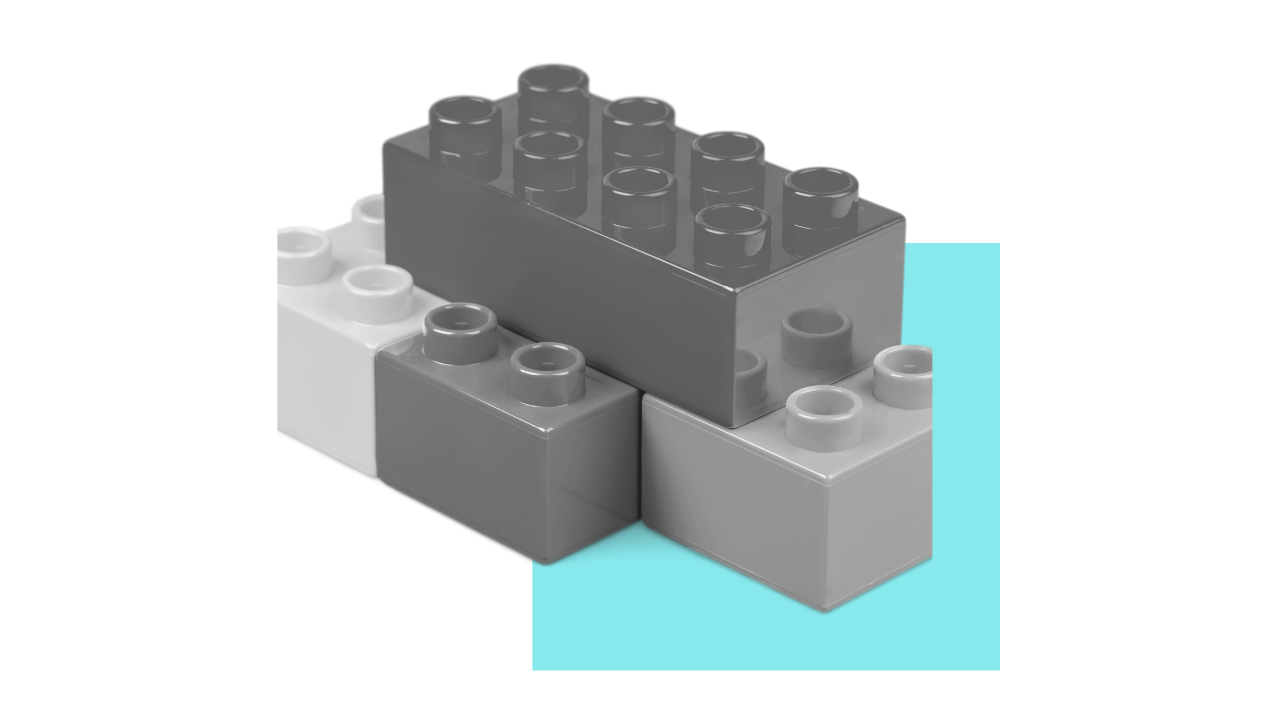
LEGO is an amazing resource. Did you know that 2022 marks the 90th Anniversary of the LEGO group? LEGO are huge champions for play, and as teachers, we all know the critical role play plays in learning. LEGO is timeless resource, which can be used not just at home, but also has many applications in the maths classroom. One barrier to using LEGO is the classroom is knowing what resources to buy and coming up with contexts in which it could be used. This is where ‘6 bricks’ is the perfect resource. Six Bricks is a wonderful (mostly free, apart from buying the bricks) movement that provides amazing learning opportunities both in Early Childhood and Primary School settings.
Background
Six Bricks launched in South Africa in 2013. It was created through a collaboration between the Care For Education Organisation and the LEGO Foundation, which is the non-for-profit arm of LEGO. Over the years, the LEGO Foundation has done a great deal of research on the benefits of learning through play. Working with Care For Education, they created a set of resources and activities that were based in play, were simple, open ended and relatively cheap for teachers and schools to access.
The 6 Bricks
The six Duplo bricks are made of three warm colours- orange, red and yellow and three cool colours, green, light blue and dark blue. It is important that these colours are used, as many of the activities specifically refer to these colours.
When and how could you use Six Bricks?
Six Bricks can be anything from a short brain-break activity, through to a whole Maths exploration. There are hundreds of six bricks activities already created. They cover Maths, Literacy, Social Emotional, STEM and also allow children to develop their social, emotional, perceptual and fine and gross motor skills. In Maths I have used six bricks when exploring spatial reasoning, pattern, measurement, problem solving, data, comparing, counting, arrays, location and sorting/classifying. There are activities that are appropriate from Early Childhood, all the way to Year 6.
Logistics
It is advisable to have a set of ‘6 bricks’ for each student in your class (36 sets of bricks is approximately $500AUD). House them somewhere that is easily accessible, for example in the student’s tubs or on their desk. This means you don’t waste time giving out the bricks each time you want to use them. It will also be a constant reminder to use the bricks regularly for short sessions which will allow the children to increase their fluency with the concepts you are covering.
Sample Activities
Some of the below activities involve student’s using their individual bricks, others require combining your classes collection of bricks.
Foundation
Vertical Towers
Focus: Below, Above, Top, Bottom
Example: Teacher or partner instructs ‘Put the red brick below the yellow brick’

Horizontal Line
Focus: Next, After, crossing the midline of your body (use your left hand to place bricks on the right side and vice versa)
Example: Place the green brick on the far left using your right hand. Put the orange next. After the orange place the light blue brick. Use your left hand to put the red next to the blue brick.

Roll and Cover
Focus: Subitsing, One to One Correspondence, Finger Identification
Example: Roll a dice and cover that number of studs with your fingers.
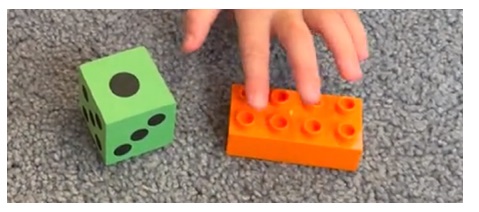
Year 1/2
Our Favourite Brick
Focus: One to One Correspondence, Collating and Collecting Data, Interpreting Graphs.
Example: Hold up your favourite colour brick
Bring your brick to the front and let’s create a class graph of our favourite bricks. What do you notice? what do you wonder?
Measure It
Focus: Comparing using uniform informal units
Example: Can you find something in the room that is 4 bricks long? 6 bricks high? Can you measure something in the room using bricks?
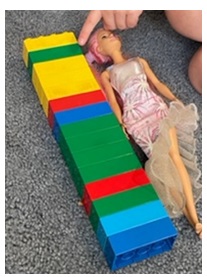
Year 3/4
Mirror, Mirror
Focus: Investigating symmetry
Example: With a partner, can you make a symmetrical brick image and then prove it is symmetrical using a mirror?
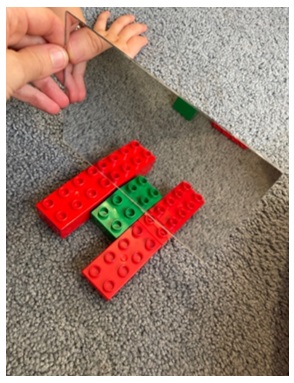
Brick Array
Focus: Arrays, multiplication, factors, multiples
Example: How many different arrays can you make with your 6 bricks? Can you write a multiplication equation to represent each array? If you added another brick what would happen? What do you notice? What do you wonder?
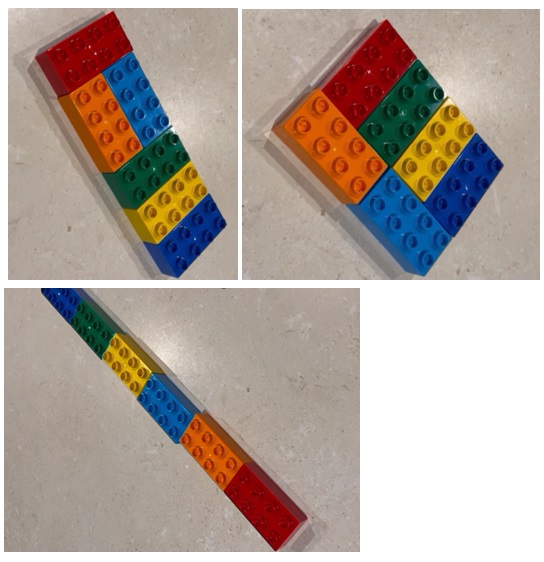
Year 5/6
Brick Moves
Focus: Translations, Reflections, Rotations, Enlargement
Example: Create a shape using bricks, can you take a photo to show what it looks like when you translate, reflect and enlarge the shape? Put these photos into a Slideshow to share with the class.
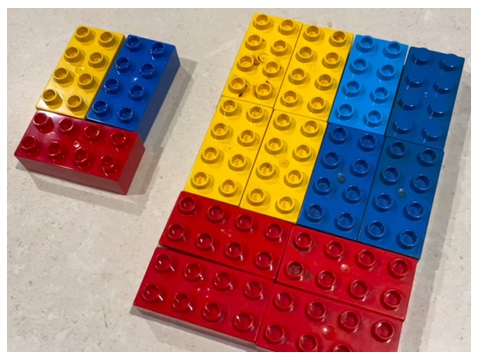
Brick Values
Focus: Order of Operations, Multiplication, Brackets, Writing Number Sentences
Example: If the warm colour bricks are worth six and the cool colour bricks are worth twelve can you write a number sentence to show how you calculated the total value of the bricks?
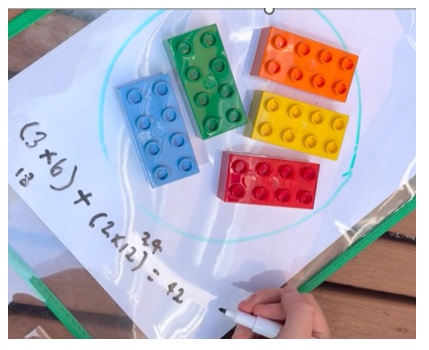
Conclusion: 6 bricks is a simple, hands-on, engaging approach that provides authentic experiences for learning through play. I would encourage any school or Early Childhood settings to look at the resources below to find out more!
Other Resources:
Care for Education (partner of LEGO Foundation): https://www.carefored.co.za/
LEGO Foundation Website: learningthroughplay.com
PDF Booklet: https://cms.learningthroughplay.com/media/jrfpg4tx/sixbricks_ok_print.pdf
Facebook Group: The 6 Bricks Facebook Group has lots of ideas and resources.
YouTube: Simply search for ‘6 Bricks’

